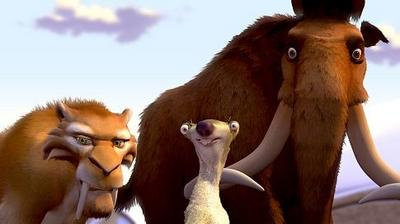
Education
Ice Age
Focused on a mythical disaster, glaciation, this film shows how thousands of beings are forced to migrate from their home territory, searching for shelter in safer lands.
Selection of four film scenes and didactic lessons on response strategies to intervene with displaced population. Material prepared by Juan Jorge Michel Fariņa (University of Buenos Aires), with the collaboration of Zelde Espinel and James Schultz (University of Miami), based on the original text by Ignacio Lewkowicz and Cristina Corea (UBA).
Source: IBIS Intervention in Disasters (English version, 2003-2006)
See Didactic Module (pps presentation)
|
Directed by: Carlos Saldanha / Chris Wedge Script:
Michael J. Wilson /
Michael Berg |
Cast: Ray Romano ____ Manfred John Leguizamo ____ Sid Denis Leary ____ Diego Goran Visnjic ____ Soto Jack Black ____ Zeke |
1. The film, "Ice Age," narrates the circumstances of a mythical catastrophe,
the sudden appearance of the Ice Age. In common with many catastrophes, both
human and natural, this film shows how thousands of beings are forced to migrate
from their home territory, searching for shelter in safer lands. The scene
describing the mass exodus is a moving allegory reminding us of the displacement
that characterizes many contemporary disasters.
2. Living through this disaster, three strangers become friends. Sid, Manny, and
Diego decide to form a herd. There's a difference between living and surviving.
If it was merely a function of survival, the alliance among a lazy marsupial, a
tiger, and a mammoth would not be very effective. The mammoth is the most unfit
to survive. Ironically, he is the one who saves Diego, the saber-tooth tiger.
The least fit saves the most fit. In fact, it is the mammoth who intones the law
of the herd, "We take care of each other."
3. Diego, the sabre-tooth tiger, changes his initial position as the story
unfolds. At first, he becomes a member of the herd in order to do his job: to
serve his boss a nice human baby for breakfast. Later on, he hesitates in his
mission as he begins to bond with his new companions. Diego grows fond of his
new friends, takes on responsibilities, and develops affection. Finally, when
the herd is in urgent danger, he turns his back on his boss and makes a decision
that will change his life.
4. The squirrel in the film represents the image of pure survival. Throughout
the millennia, she stubbornly traverses the ice flows, driven by a single
impulse, the acorn. Though millions of years pass, the squirrel never bonds; she
just runs after the acorn. Her strategy is, without question, highly effective
in terms of survival, but devoid of the bonds of interpersonal experience.
5. Finally, the film presents an unexpected ethical issue. What bonds Sid, Manny,
and Diego together is a common mission--to return a lost human cub to its tribe.
This is a very strange mission since the story is told from the animals' point
of view. The trio is actually rescuing a potential future predator of mammoths,
tigers, and marsupials. Yet, for these characters, the issue is clear: there are
no reservations when it comes to saving a life.